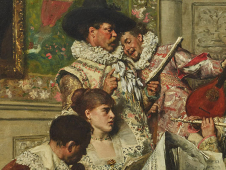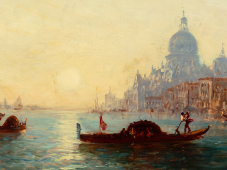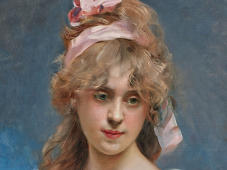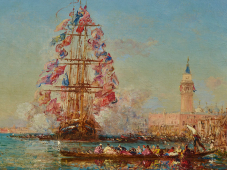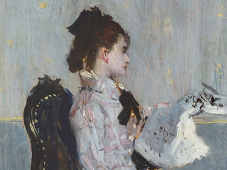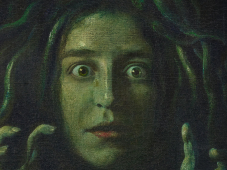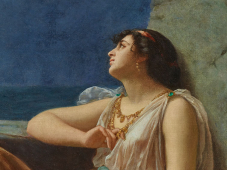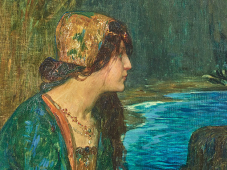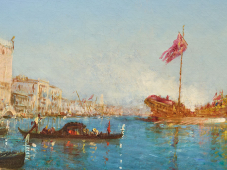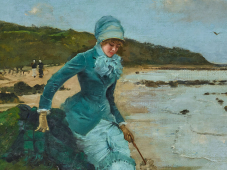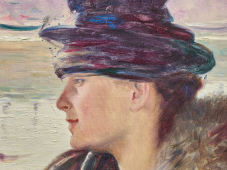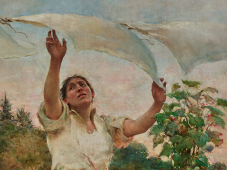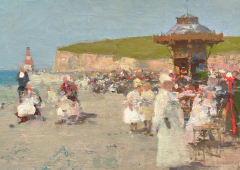The Reading
Description of the artwork
Firmly rooted in the Marne valley, it was in the area around Charly-sur-Marne, where he settled in 1886, that Buland found the models for his paintings, mainly among the peasants and workers he frequented.
As in the 1899 painting entitled “Procession”, in which the interior of the church in Charly-sur-Marne is clearly recognizable (now in the Villa Médicis museum in Saint Maur des Fossés), and in “Offrande à la Vierge” (Offering to the Virgin) from 1879 (now in the Musée Malraux in Le Havre), the woman wears the headdress of her region. She has stopped her embroidery to listen to her daughter read to her.
Following the classical tradition, Eugène Buland plays on multiple contrasts to capture our attention: youth and maturity, pink dress and mourning dress, manual labor and intellectual work. The succession of horizontal and vertical planes lends an important dynamic to this representation, which also has a certain immobility that we find in his portraits from this period, often bringing them closer to photography.
But here, the woman and her daughter do not appear to be posing, as is sometimes the case in some of the painter's paintings. Instead, they are captured on the spot, as if we were entering the intimacy of their home and becoming spectators of the moment.
In the background, we can make out a few glassware objects, arranged on the edge of the fireplace, including a footed vase also present in the 1898 painting “Une bonne trouvaille” (A Good Find), now in the Musée Unterlinden in Colmar.
Our painting is part of the evolution of Buland's painting at the dawn of the 20th century. The painter gradually abandoned the totally frontal vision found in “Le repas du jardinier” (The Gardener's Meal), moving towards a representation that was still extremely realistic, but softer, as in the portrait of his son Jean-Paul in 1902, also captured in a moment of reading.
75008 Paris, France
Saturdays from 2 to 7 p.m.
















